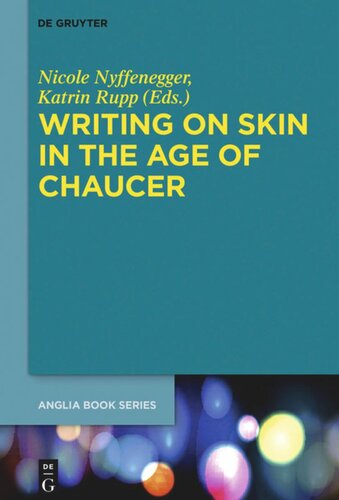

Most ebook files are in PDF format, so you can easily read them using various software such as Foxit Reader or directly on the Google Chrome browser.
Some ebook files are released by publishers in other formats such as .awz, .mobi, .epub, .fb2, etc. You may need to install specific software to read these formats on mobile/PC, such as Calibre.
Please read the tutorial at this link: https://ebookbell.com/faq
We offer FREE conversion to the popular formats you request; however, this may take some time. Therefore, right after payment, please email us, and we will try to provide the service as quickly as possible.
For some exceptional file formats or broken links (if any), please refrain from opening any disputes. Instead, email us first, and we will try to assist within a maximum of 6 hours.
EbookBell Team

0.0
0 reviewsOwing to its relatedness to parchment as the primary writing matter of the Middle Ages, human skin was not only a topic to write about in medieval texts, it was also conceived of as an inscribable surface, both in the material and in the figurative sense. This volume explores the textuality of human skin as discussed by Geoffrey Chaucer and other writers (medical, religious, philosophical, and literary) of the fourteenth and fifteenth century. It presents four main aspects of the complex relations between text, parchment, and human skin as they have been discussed in recent scholarship. These four aspects are, first, the (mostly figurative) resonances between parchment-making and transformations of human skin, second, parchment as a space of contact between animal and human spheres, third, human skin and parchment as sites where (gender) identities are negotiated, and fourth, the place of medieval skin studies within cultural studies and its relationship to the major concerns of cultural studies: the difficult demarcation of skin from body, the instability of any inscription, and the skin’s precarious state as an entity of its own.